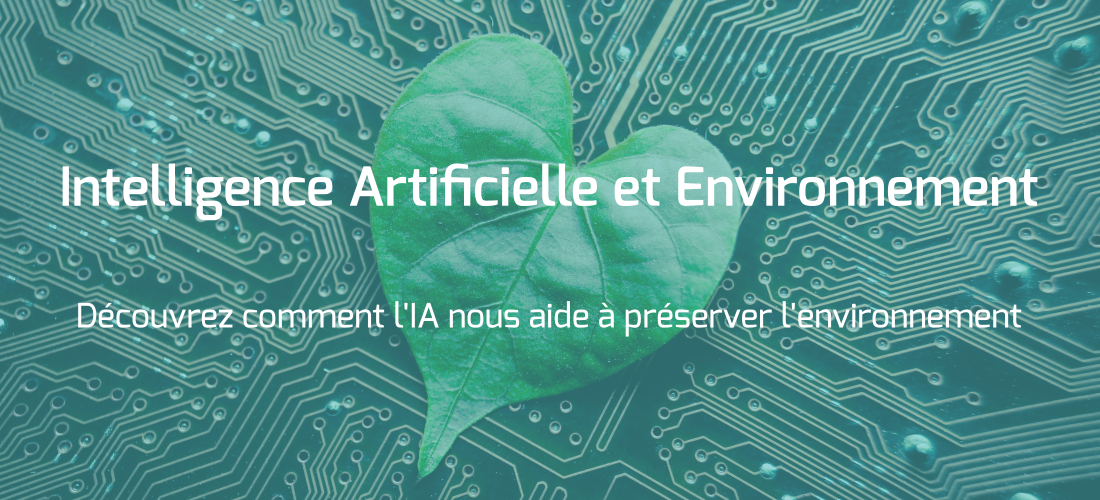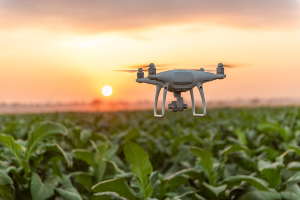
Artificial intelligence and environment
ARTIFICIAL INTELLIGENCE IN THE FIELD OF ENVIRONMENT
In a previous article, we were interested in the applications of AI in the field of energy. Although AI consumes a lot of energy, the numerous applications we can find show that it is also a source of savings. Examples from the smart building and energy management sectors are proof of this.
However, whether it is used in transport, management or even to sort waste, artificial intelligence also has applications in the environmental field.
Artificial intelligence can help us rationalize our consumption while limiting the impact on our environment. Let’s take a look at this together!
Image recognition to optimize waste sorting
The sorting of waste is already – partly – automated thanks to the difference in density of recyclable materials. However, this is not always enough. Some types of waste are very similar in terms of composition but really different in terms of use or color!
Plastics, metals, but also glass are types of waste that require special treatment. The only way to differentiate some types of waste and therefore to sort them is based on their appearance. By using Deep Learning associated with Computer Vision, it is possible to classify and sort waste according to its visual aspect in an automated way at very high speed. Waste sorting is therefore massively optimized because it is accelerated and made more reliable. Do better, faster!
In a different way, the Polish company Bin-e created a smart waste container. Using artificial intelligence, the container automatically sorts and compresses the different waste types. Then, a sensor indicates when the container should be emptied. This container allows for better waste sorting but also optimizes garbage collection.
Client case study
This is particularly true of PET plastic packaging, a subject on which Neovision is working with Pellenc ST.
Some PET packaging are intended for food use, others are not. To qualify as food grade, PET must not be mixed with non-food grade PET. This is quite logical when you consider that some packaging may have contained highly toxic products. That’s where Neovision’s AI comes in. The only way to differentiate these two kinds of PET? Their visual aspect. With Deep Learning applied to Computer Vision, it is possible to classify different plastic packaging according to their appearance, which gives us information on their past use (in particular thanks to the brand name on the packaging).
Thanks to Neovision’s technology, Pellenc ST has machines that sort PET packaging with an accuracy of 94% at a speed of less than 1.5 ms (milliseconds, yes, you read that right).
AI & transportation: less miles, less fuel, less carbon emissions
The transportation sector is the largest source of CO2 emissions. According to the IFT, in 2018, transportation accounted for 24% of global CO2 emissions. In this total, road transport accounts for 75% of emissions. However, if nothing changes these externalities should experience an increase of 60% by 2050. No reason to be satisfied with a potential status quo.
When we talk about artificial intelligence and transportation, autonomous vehicles spring to mind. This technology, dear to Elon Musk’s heart, could well revolutionize our vision of the automobile. We might be on the verge of a new paradigm leading to the end of individual vehicles, especially in an urban environment. How is this possible? First of all, because fleets of shared vehicles are mushrooming in urban areas. Thousands of cars are still 80% of the time. Add to that, the cost of maintaining a vehicle and parking spaces that are becoming as expensive as they are rare. We can only make one observation: we are dealing with a system that is far from being optimized. However, if we project ourselves a little, a solution comes to mind: let’s imagine a fleet of self-driving cars. As you do with a taxi, you could request a vehicle for a ride and then another person could take advantage of this service. Individual transportation could thus be rationalized and provided by a small fleet of autonomous vehicles.
But AI has many more applications in the world of transportation… Before talking about breakthrough technology, it is possible to optimize what already exists. If maps and GPS have allowed us to optimize our travels, we can go further. In particular when we look at public transport and freight transport. AI allows us today, via operational research, to optimize our journeys, whether for land vehicles or for civil aviation! AI allows to save many unnecessary miles, saving time, money but also reducing the environmental impact!
Client case study
Neovision worked on this topic with Transarc.
The transport company was wondering how to improve the organization of its routes. After a few talks and advice from Neovision, a project to optimize their routes in order to limit empty mileage was born!
Neovision developed a web application integrating an AI capable of optimizing routes by modifying certain driver assignments to sectors. The application proposes operational changes to managers, who then propose them to bus drivers.
The result is a saving of 200,000 kilometers in one year, that is to say – roughly €200,000. Transarc therefore obtained a financial ROI of 100% in 3 months. But the company also saw its carbon footprint drop! Did you say amazing?
A sustainable agriculture thanks to AI?
Intensive agriculture is not really environment-friendly. Two things explain this: monoculture, far from encouraging biodiversity, and the massive use of phytosanitary products. If new agricultural methods, such as permaculture, bring an alternative solution to monoculture, the use of phytosanitary products such as fertilizers and pesticides does not decrease.
This is terrible news since this unbridled use poses several major problems: destruction of biodiversity, water pollution, pollution and sterilization of soils, health risks for humans… Many problems but few – if any – solutions. Well, maybe that is no longer the case now.
Some companies are developing solutions that help farmers to use smart alternatives and therefore reduce their consumption of phytosanitary products.
Abelio is one of these companies. The startup offers a solution combining several technologies: solar drone, multispectral sensor and artificial intelligence. The drone flies over the farms and comes to detect, precisely, the zones and plots with a problem. Whether it is deficiencies, pathologies or pests, Abelio is able to recognize and locate them. Following this automated diagnosis, the farmer is able to target the use of fertilizers or pesticides. No need for global spreading, and a rationalized consumption.
In addition to the ecological and health benefits, farmers also make significant financial savings since the products are often expensive.
Waste detection to clean our cities… and our rivers!
If the plastic continent and the increasing concentration of plastic microparticles in the oceans worry us rightly, they are only a consequence of our plastic consumption and our habits.
We do not directly throw plastic packaging into the sea or the ocean. Most of the time, plastic waste ends up on the ground of our cities, then in the gutter, the sewers and the rivers. And as everyone learned in school, rivers inevitably end up in the sea or the ocean. This is how plastic waste flows its way into our seas.
But AI can bring us solutions in our cities and also to clean up the waterways.
This issue is rooted in cities, which are big producers of waste. It would therefore be interesting to find a solution applicable in this ecosystem. We will mention two of them: smart surveillance cameras and AI-assisted road vehicles.
The first solution is quite simple. Consider a neighborhood in a city with recurring cleanliness problems. By installing a camera, or using one already in place, it would be possible to detect a pile of waste. Thus, the road services can trigger a cleaning and collection operation to prevent this waste from being washed away by bad weather. In the same way, this solution would make it possible to fight against illegal dumping, by identifying the culprits.
The second solution is quite complementary to the first. The specialized vehicles used to clean the streets are anything but intelligent. They push the waste directly into the gutter and send it to the sewers. Not practical for sorting out cigarette butts from dead leaves. Result: The streets are clean, at the expense of the ocean. Researchers at EPFL have developed a technology capable of identifying 25 categories of waste on the ground: plastic bottles, newspapers, cigarette butts, tree leaves. This technology exploits cameras embedded in road vehicles and allows to better understand the state of pollution in cities, to optimize cleaning routes and frequencies. The next step will probably be to make vehicles capable of sorting the waste they encounter.
Let’s come to the pollution of rivers up to their mouths… Vast subject. Ocean Cleanup, an NGO supported by Microsoft, wants to clean up the oceans. However, before embarking on a project of this dimension, the NGO is developing “The Interceptor”, barges capturing floating waste to clean rivers in Asia. The barges are autonomous and embed machine learning models to recognize waste. Next goal: to equip 1000 rivers with these barges within five years.
The last project will probably speak to the owners of vacuum robots. The Recyclamer company has developed the Geneseas robot. This robot comes to settle in ports and marinas and runs them relentlessly. The robot collects all the floating waste but not only, it also absorbs oil slicks. The small robot is assisted by a technology that allows it to avoid collisions and an alert system when its tank is full.
By combining these two technologies, plastic waste will be well taken care of!



